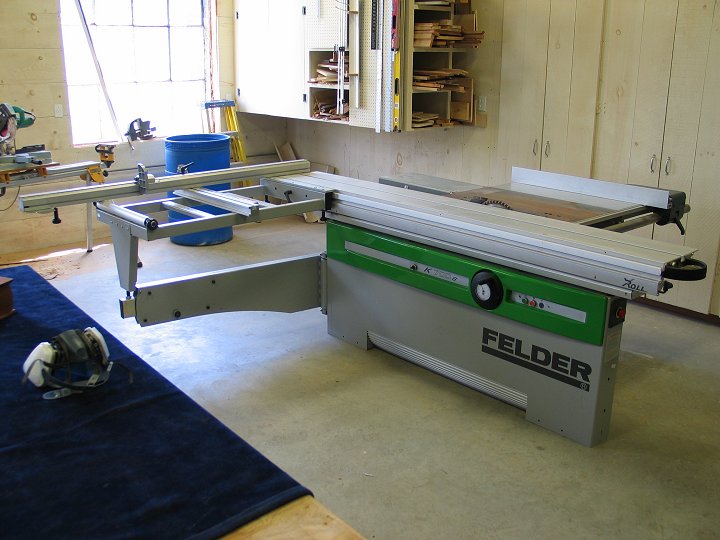I recently purchased a used Felder K700s for my shop. I build speaker cabinets and use 5' x 5' Baltic Birch panels. I figured a saw like this would be the best for handling these panels, especially alone. Ease of operation, safety, and accuracy were the reasons for the purchase and the change from my old trusty cabinet saw.
But I'm having some difficulties with using the saw.
Ease of operation? Well, yes, I suppose with large panels, it is easy to put them on the table and make the cuts alone. But using the fence to the right of the blade to make cuts is very cumbersome and dangerous if you ask me. The stand for the saw is right in the way of where I would stand to push a board through, and I find myself leaning over awkwardly to finish the cut.
Safety? Yes, for the most part, probably safer than my cabinet saw. But the blade guard does get in the way at times, and I find myself taking it off. Then, with the aforementioned issues, I feel like I'm very susceptible to an accident.
Accuracy? In my opinion, not as much as with my cabinet saw. I know I haven't used this saw all that much. In fact, I've only cut one major project with it, but just today I found myself making cuts that were not as accurate as I'm used to doing with my cabinet saw.
When I first got the saw, I spent an entire day setting it up and adjusting it. The PO did not have it set up right. I followed the Felder instructions and everything tuned in nicely. I did the five-cut system on a 4 x 8 panel for over an hour, making adjustments to the fence until I had it within a few hundredths of an inch over the 7' cut.
But what I'm finding is that it's not the accuracy of the fence that is the problem. It is simply that putting a piece of wood against the outrigger cross-cut fence is an in-exact thing. What looks to be "tightly fitting" against the fence can actually be out by a 1/16" or more over the length of the cut.
For instance, I had a piece of plywood that was about 16" x 26" long. I needed to rip this to 12-5/8" x 26". So I set the flip-stop on the cross-cut fence to 12-5/8", held the piece very carefully against the fence, wiggled a little to get it set, held very securely at the back end of the piece against the sliding table, and pushed the piece through. I found that sometimes the cut was very accurate, but other times it was off by 1/16". The accuracy of my cuts was variable, which makes it not accurate! Certainly farther out than if I was using my cabinet saw.
I do have a parallel fence for my saw, and I use it for longer narrower panels. But it takes a lot of extra time to set it up. You have to setup two fences to make the cut. With my cabinet saw, I would make one change to the fence and run the piece through. Next piece? Set the fence, run it through. I can't imaging having to use a parallel fence for a 26" long cut, and then have to change both fences to make another cut.
The Felder is a very well built machine, and it works flawlessly. I'm going to continue to get used to it and give it plenty of time before making any changes. But I'm writing all this to get advice from those who use these types of saws, on ways that might make it easier for me.
Greg






 Reply With Quote
Reply With Quote



